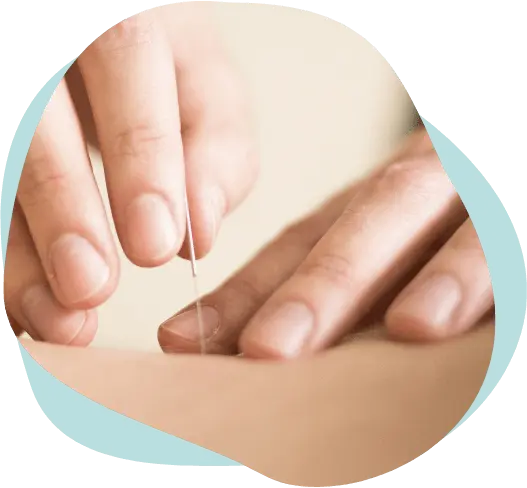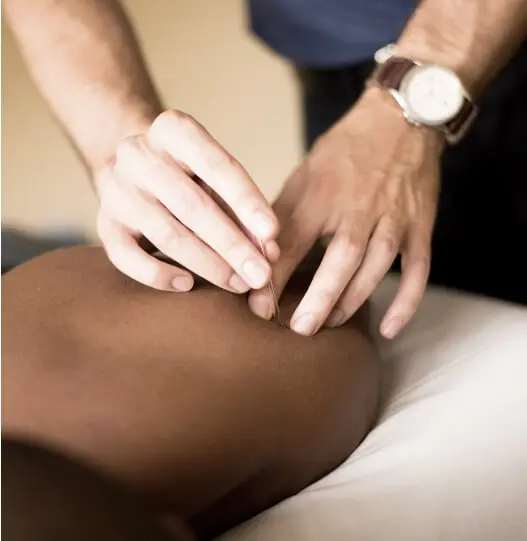DRY NEEDLING
Learn more about
Dry Needling
Treating sports-related injuries with evidence-based dry needling therapy
The goal of dry needling is to loosen myofascial trigger points and knots in a muscle to relieve pain and increase range of motion in joints. These trigger points are hypersensitive areas on the muscles, ligaments and tendons that can lead to pain and stiffness after an injury.
While it may sound intimidating, dry needling is a proven, effective and mild technique for those with certain musculoskeletal issues.

631-403-0504


Do you know?
What types of conditions can dry needling treat?
Dry needling can treat many sports-related injuries or pain including:
- Neck/back pain
- Shoulder pain
- Tennis/golfer’s elbow
- Headaches and migraines
- Hip and gluteal pain
- Knee pain
- Achilles tendonitis
- Plantar fasciitis
- Sciatica
- Muscular strains/ligament sprains
- Chronic pain
- Improve athletic performance/recovery
How does it work?
What is the difference between dry needling and acupuncture?
The main difference between dry needling and acupuncture is the medical theory used to diagnose and treat a patient. A dry needling practitioner views the body through a Western medical perspective. An acupuncturist views the body through an Eastern medical perspective.
Dry needling is an acupuncture technique known as ashi point needling. The ashi point is not found on a traditional list of acupuncture points, and is defined as the most tender spot on a body part when pressed on. When performing ashi point needling, a fine needle is inserted until a dull ache, soreness, or radiating sensation is felt. After this sensation is achieved, the needle is removed.
Skilled acupuncturists use ashi needling to treat neuromuscular conditions, pain, and to improve joint range of motion. This technique is especially effective in treating conditions related to sports injuries.


How does it work?
Is dry needling painful?
When performed by a skilled acupuncturist, there is little discomfort associated with this technique. Common sensations encountered during dry needling are dullness at the insertion site, a radiating sensation (when the dullness travels to spots away from the insertion site), and a localized twitch response (like an eye twitch, but bigger). In fact, these ‘therapeutic sensations’ are key to this treatment because if you do not feel them, there is little to no pain relief.
Ashi point needling or dry needling is often thought of as painful because of the intensity of the treatment and lingering soreness for days afterward. This is usual when the procedure is performed by a practitioner who is not trained with Chinese Medical Theory and the procedure tends to be unnecessarily aggressive.
This is not the case for most patients when performed by an acupuncturist because of the difference of technique. The patient will usually feel a mild soreness for no more than 24 hours
If you or a loved one is considering acupuncture, acupressure, medical massage, dry needling or trigger point releases to help ease chronic pain or deal with symptoms of chronic conditions or diseases,
Please call our office at

631-403-0504
to request an appointment and learn more about our individualized treatment plans.
You shouldn’t have to live with pain. We can help.